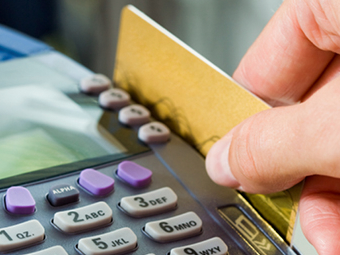The United States is in uncharted waters for 2017 as far as the economy is concerned, says WalletHub, a personal financial website.
“Riding an economic recovery that has lasted years longer than average and awaiting the inauguration of a president who can send shockwaves through global financial markets with a single tweet” makes predictions harder than usual this year, WalletHub says.
But the website took a stab at predicting the future anyway. Following are 10 things WalletHub says are likely to happen in the New Year.

No. 10. Credit card charge-offs, the amount credit card companies assume will not be repaid, will top $30 billion, limiting credit availability.

No. 9. The Consumer Financial Protection Bureau won’t die. President-Elect Trump rode a populist wave to the White House, and it’s hard to tell how much grassroots support there would be for eliminating an agency that provided nearly $12 billion in relief for consumers wronged by financial institutions in just its first five years of existence.

No. 8. Consumer credit scores will peak at 675 in 2017. Credit scores have been rising steadily since the end of the Great Recession, and the recovery is expected to culminate in 2017.

No. 7. Credit card debt will break all-time records, topping $1 Trillion owed. 2016 was a record-setting year for consumer credit card debt, with the smallest first-quarter paydown since 2008, as well as the biggest second- and third-quarter build-ups since 2007.

No. 6 The Fed will raise interest rates twice during 2017, bringing its target to 1.125 percent. WalletHub predicts there will be two quarter-point increases.

No. 5. Existing home sales will rise to 6 million, despite higher interest rates. “If interest rates rise slowly, we may see a nice bump in home sales and mortgage availability as buyers see low interest rates slowly fading and banks have higher rates to buffer against risk,” says Robert Eyler, director of the Center for Regional Economic Analysis at Sonoma State University.

No. 4. U.S. auto sales will surpass 17 million for the third straight year. Total light-vehicle sales have risen consistently since September 2009, reaching a record high of 17.4 million units in 2015 that we might narrowly surpass in 2016; 2017 is shaping up to provide more of the same.

No. 3. The S&P 500 won’t do much better than an online savings account. The stock market has been on a tear since the U.S. presidential election, but don’t expect that to continue indefinitely. Stocks are still quite expensive, with shares of the average company in the S&P 500 trading at roughly 26 times earnings, compared to a historical average of just under 16 times.

No. 2. The unemployment rate will end at 5 percent. At 4.6 percent as of November, the unemployment rate is far below the historical average of 5.8 percent, according to Bureau of Labor Statistics data compiled since 1948.

No. 1. U.S. GDP growth will remain anemic at 2.1 percent. “The economy will start off well, but will likely slow after that, partly due to concerns about rising deficits and partly due to monetary policy that will tighten,” says Michael W. Klein, professor of international economic affairs at Tufts University.